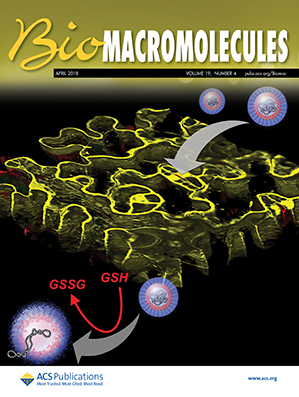木聚糖乙酰化模式对与纤维素相互作用的影响。
IF 5.4
2区 化学
Q1 BIOCHEMISTRY & MOLECULAR BIOLOGY
引用次数: 0
摘要
本研究表明,木聚糖乙酰化程度的变化显著改变了与(100)疏水纤维素有效相互作用的2倍螺旋种群,而这种影响在(110)亲水表面不太明显。所有的乙酰化木聚糖在疏水性纤维素上显示出约10-40%的高2倍密度,这是由于木聚糖与纤维素之间有更高的接触。偏离周期性乙酰化导致低得多的2倍构象,尽管有相当数量的木聚糖-纤维素氢键和接触。因此,可以假设,一组特定且独特的木聚糖与纤维素相互作用介导了2倍木聚糖与纤维素相互作用的形成,这也是一个2倍螺旋。高度乙酰化的木聚糖从纤维素中解吸,而低乙酰化的木聚糖则依赖于纤维素表面的拓扑结构。这些发现为植物细胞壁微观结构动力学提供了更多的见解,并为生物燃料生产中有效的生物质解构提供了未来的策略。本文章由计算机程序翻译,如有差异,请以英文原文为准。
Effect of Acetylation Patterns of Xylan on Interactions with Cellulose
The present study demonstrates that the change in the degree of xylan acetylation significantly alters the 2-fold screw population that effectively interacts with the (100) hydrophobic cellulose, while such effects are less prominent for the (110) hydrophilic surface. All of the acetylated xylans reveal an ≈10–40% higher 2-fold population on the hydrophobic cellulose due to higher xylan-cellulose contacts. Deviations from periodic acetylation result in much lower 2-fold conformations, despite a comparable number of xylan-cellulose hydrogen bonds and contacts. Thus, it can be hypothesized that a specific and unique set of xylan: cellulose interactions mediate the formation of 2-fold xylan to interact with cellulose, which is also a 2-fold screw. Highly acetylated xylans desorb from cellulose, while low acetylated xylans show dependence on the topology of the cellulose surface. These findings provide additional insights into plant cell wall microstructure dynamics and inform future strategies for efficient biomass deconstruction in biofuel production.
- Download: Download high-res image (110KB)
- Download: Download full-size image
求助全文
通过发布文献求助,成功后即可免费获取论文全文。
去求助
来源期刊

Biomacromolecules
化学-高分子科学
CiteScore
10.60
自引率
4.80%
发文量
417
审稿时长
1.6 months
期刊介绍:
Biomacromolecules is a leading forum for the dissemination of cutting-edge research at the interface of polymer science and biology. Submissions to Biomacromolecules should contain strong elements of innovation in terms of macromolecular design, synthesis and characterization, or in the application of polymer materials to biology and medicine.
Topics covered by Biomacromolecules include, but are not exclusively limited to: sustainable polymers, polymers based on natural and renewable resources, degradable polymers, polymer conjugates, polymeric drugs, polymers in biocatalysis, biomacromolecular assembly, biomimetic polymers, polymer-biomineral hybrids, biomimetic-polymer processing, polymer recycling, bioactive polymer surfaces, original polymer design for biomedical applications such as immunotherapy, drug delivery, gene delivery, antimicrobial applications, diagnostic imaging and biosensing, polymers in tissue engineering and regenerative medicine, polymeric scaffolds and hydrogels for cell culture and delivery.
 求助内容:
求助内容: 应助结果提醒方式:
应助结果提醒方式:


